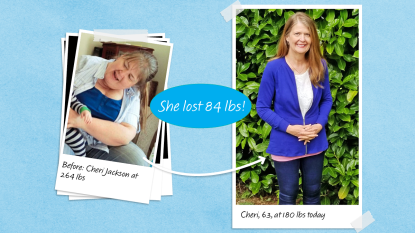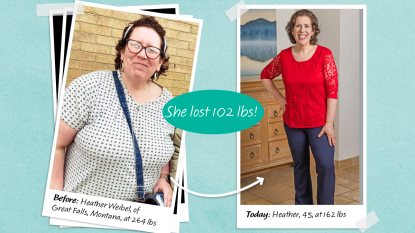The Warrior Diet Is Intermittent Fasting for Those Who Love Eating at Night

As you might guess from the name, the warrior diet is not for the faint of heart. But if you’re someone who has experience with intermittent fasting and you love to eat at night, it just might be the right eating plan for you.
What is the warrior diet?
The warrior diet is a form of intermittent fasting that involves eating very few things — think calorie-free beverages and small servings of fruits and veggies — throughout a 20-hour time period during the day, according to Medical News Today. Then, in the remaining four hours, you basically eat one gigantic meal at night.
Designed by fitness expert Ori Hofmekler, the warrior diet is based on the theory that ancient warriors ate very lightly during the day — if they got the chance to eat anything at all — and then had a major feast at night after a hunt. As you can probably imagine, this form of intermittent fasting can be very challenging to stick to in the long term, especially if you’re used to eating multiple meals a day while it’s still light outside. The warrior diet is certainly not for everyone.
That said, it can be an effective way to lose weight if it does fit with your lifestyle. John Romaniello, the founder of Roman Fitness System and a New York Times best-selling author, wrote of his personal experience with the warrior diet: “Much like a 24-hour fast, a 20-hour fast allows you to reap the hormonal benefit of increased growth hormone. And, like all fasting, generally will result in fewer calories being consumed. The benefit that is unique to this type of fasting is that you’re generally eating one large meal and, therefore, the makeup of such a meal isn’t as important as you might think; as long as you get adequate protein, you can eat ‘junkier’ foods and still do well.”
How to Do the Warrior Diet Correctly
If you decide to follow the warrior diet, it’s important that you focus on eating lots of healthy food — including vegetables, protein, good fats, and some carbohydrates — during your four-hour feasting window. You don’t want to risk running low on nutrients just because you’re following a new timeframe of eating than you were before. Fiber is an especially crucial nutrient to keep an eye on while you’re on the warrior diet.
It’s no wonder why experts say the warrior diet may be best suited for folks who have already tried other less-restrictive types of intermittent fasting, such as the 16:8 diet and the 5:2 diet. But here’s the good news: Much like the warriors from the past, you won’t have to count your calories for your nightly meal; it can indeed be a true feast. Even better? As you can probably guess, no actual hunting is required today.
For more details on the warrior diet, you can check out the book The Warrior Diet: Switch on Your Biological Powerhouse for High Energy, Explosive Strength, and a Leaner, Harder Body ($16.77, Amazon). Remember, always talk to your doctor before trying any new eating plan, including any type of intermittent fasting.
Next, learn about the tastiest superfoods that can help you live longer in the video below:
More From FIRST
7 ‘Negative-Calorie’ Foods That Help You Stay Satisfied While Dieting
9 Supposedly Unhealthy Foods That Aren’t Actually Incompatible With Your Diet
The Superfood-Rich Portfolio Diet Is the Tasty Way to Shed Pounds and Improve Heart Health













